

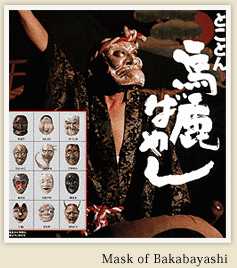
During Kanbun era in the middle of Edo period, when Ietsuna Tokugawa was the shogun, Japanese people enjoyed the efflorescence of Genroku culture. It was when the founder Hikoshiro created a branch family from the Zenemon Tada family which ran a large “Katsumi rice shop”. Rice shops at that time played a similar role as banks. The head of Katsumi rice shop, Zenemon Keiren Tada was a brother of the forth head monk, Ganjun at Ensenji temple, where Tada family’s ancestors are laid to rest.
Zenemon was a warrior until the warring period ended after Hideyoshi Toyotomi and Ieyasu Tokugawa ruled Japan, and then he established a rice shop in downtown Fukui castle, which served as the center of financial institution of Fukui feudal clan. The founder Hikoshiro separeted from the main family while the second head was in charge. On the family tomb stone, the names of the founder, the second head and the second head’s wife are engraved. The purpose of the builder, probably the third head of the family, Goemon Tada, was to commemorate where the family came from. The first head of Komego Tada family was in the same generation as the third head of the Katsumi Rice shop.
A mask used in “Bakabayashi”, one of Fukui’s intangible folk cultural assets, was donated by Zenshirou Tada of Katsumi rice shop.

The name Goemon had been inherited until the seventh generation.
This person’s name was also found on the head family’s record. So, he was probably adopted from the head family of Katsumi’s large rice store to inherit the family legacy because the founder Hikoshirou did not have a child. The name ”Komego” has been used ever since this time, approximately 300 years ago when Tsunayoshi the fifth Tokugawa Shogun was ruling.



Komego family had been selling just rice for generations until this fifth head started selling miso and shouyu (soy sauce). The name Komeya (rice shop) disappears from this period according to the record kept at their family temple, Ensenji.

The Tadas have been dedicated Buddhists from generation to generation. Other than spending time to learn the teachings of Buddhism, Goemon VI enjoyed making haiku and drawing pictures. Before he passed away, he left death poems as follow;
−かりそめの うき世に住むも ただならず
南無阿弥陀仏の 御恩忘るな−
−花の世の 花見おわりて うれしきは
限りなき世の 花を見るかな−
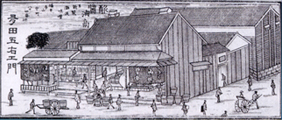

Goemon VII also was a dedicated Buddhist. When he was young, he worked hard to bring fortune to his family. From 1867 (Keiou 3) to 1901(Meiji 34) he left the record of accounting results. Among the record he wrote a family principles.
(『茲二年々比較ヲ列記シ併セテ将来ノ勉カヲ奨励スル為メ一言ヲ掲ケ以テ永遠ニ服膺 ス可キ事ヲ務ム』)
心 愈 謙 則 徳 愈 崇
事 愈 勤 仍 業 愈 廣
He was skilled at making Haiku and drawing. He adopted “Kiryuu” as his artist name and was appointed as the fourteenth master of Mino school. After he passed on his business to the next generation, he traveled around making Haiku and drawing pictures. There are some of his art lives on, on trays and folding screens preserved as heirlooms. He was also a good Nou dancer. He danced for Bungaku Matsudaira (Yasutaka Matsudaira, the eighteenth head of Fukui feudal clan) at Nougakudou. He was given a hanging scroll, saying “Kaki koudou ni mitu (Wishing your house will be filled with good smell and spirit)”as a reward of the great performance.

Goshichirou had a very tender mind. He inherited the family business and worked hard to maintain it. He highly valued his belief in Buddhism and he always taught his family members the teachings of Buddha. He cooperated in the establishment of Jin-ai Gakuen, a high school located in Fukui city. He also put a great effort on establishing Fuku Syouyu Co. Ltd., a soy sauce maker located in Fukui city, with his brother Yuusaku Yagi and other volunteers in 1918 (Taisho 7). He was interested in Haiku and Drawings, his artist name being Bunko. He led a peaceful life.
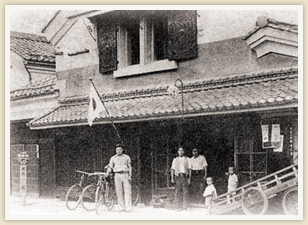
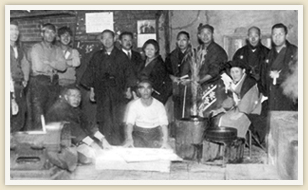

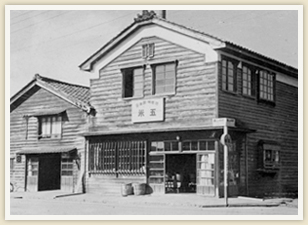
Passing away at the age 58, Goroji’s life was relatively short but the latter half of his was a severe one due to the troubled times in Fukui; Japan lost the Second World War, Fukui was bombed in an air raid, and then it experienced a large earthquake and flood. He strived to overcome the crisis. As a result, he made good out of evil. Aiming to modernize his business, he established “Komego Store Co,. Ltd.” which was the former company of Komego Co,. Ltd.

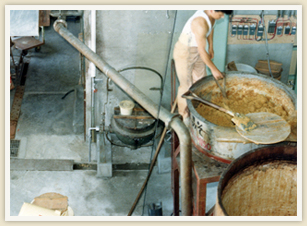
Although Kenji was passed on the family business during a difficult period, he succeeded in making his company a renowned miso specialist with the catch phrase “Komego no miso”. He was good at public relations and socializing. He started selling the products at supermarkets, installed modern facilities in the factory, and undertook the management without debt. He was interested in politics and was famous for being a big railway enthusiast. He traveled to Europe several times in order to ride on trains. He almost completed his dream of riding all the railways in Europe, but regretfully his sickness did not let him.

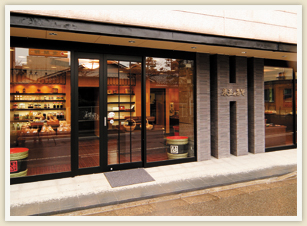
In 1980, Kazuhiro was hired by Nippon Electric Co., Ltd. after graduation of Faculty of Engineering at Fukui University. He worked as an engineer for the development of file transmission and the creation of ISO8571 agreement. He joined his family business, Komego in 1991 and later became the president in 2001. He was highly influential before that however; in 1993, he started direct sales to private customers by mail-order, revising the conventional sales route of mainly wholesale and corporate customers. In 1997, he started selling miso through the online shop, contributing to the increase in sales. Moreover, he has been dedicating much of his efforts into improving the brand image of “Komego” as a high quality miso shop. He renovated the shop in Haruyama, Fukui city in 2006. The shop has been reborn as a more customer-oriented specialty miso shop that sells miso by its weight.